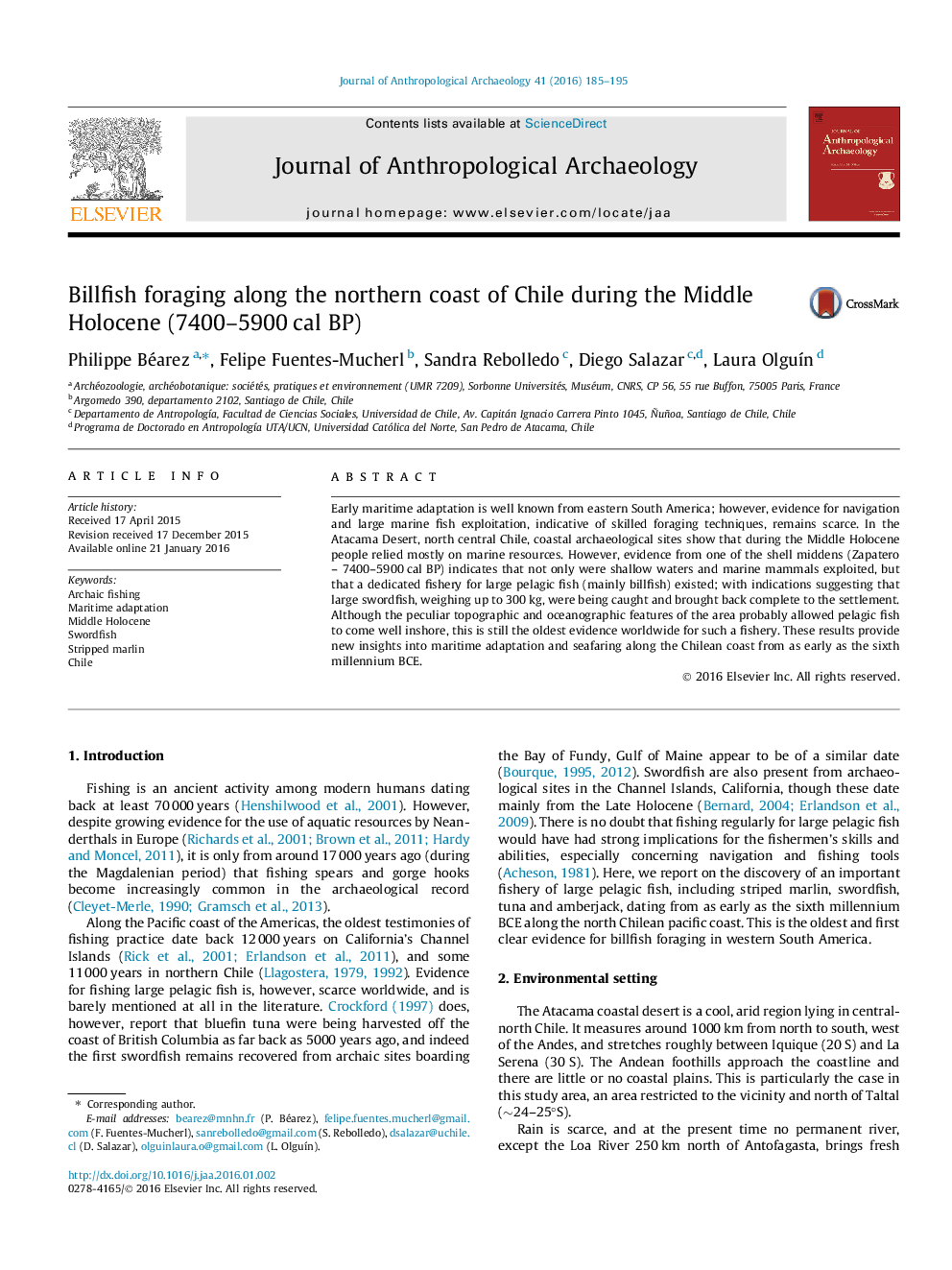| کد مقاله | کد نشریه | سال انتشار | مقاله انگلیسی | نسخه تمام متن |
|---|---|---|---|---|
| 1034880 | 1483849 | 2016 | 11 صفحه PDF | دانلود رایگان |
• Oldest billfish foraging evidence from the Middle Holocene.
• First evidence of a specialized fishery for large pelagic fish in South America.
• Capture of large pelagic fish implies navigation skills and excellent knowledge of the sea.
• Archaic people along the Chilean coast relied heavily on marine resources.
Early maritime adaptation is well known from eastern South America; however, evidence for navigation and large marine fish exploitation, indicative of skilled foraging techniques, remains scarce. In the Atacama Desert, north central Chile, coastal archaeological sites show that during the Middle Holocene people relied mostly on marine resources. However, evidence from one of the shell middens (Zapatero – 7400–5900 cal BP) indicates that not only were shallow waters and marine mammals exploited, but that a dedicated fishery for large pelagic fish (mainly billfish) existed; with indications suggesting that large swordfish, weighing up to 300 kg, were being caught and brought back complete to the settlement. Although the peculiar topographic and oceanographic features of the area probably allowed pelagic fish to come well inshore, this is still the oldest evidence worldwide for such a fishery. These results provide new insights into maritime adaptation and seafaring along the Chilean coast from as early as the sixth millennium BCE.
Journal: Journal of Anthropological Archaeology - Volume 41, March 2016, Pages 185–195
